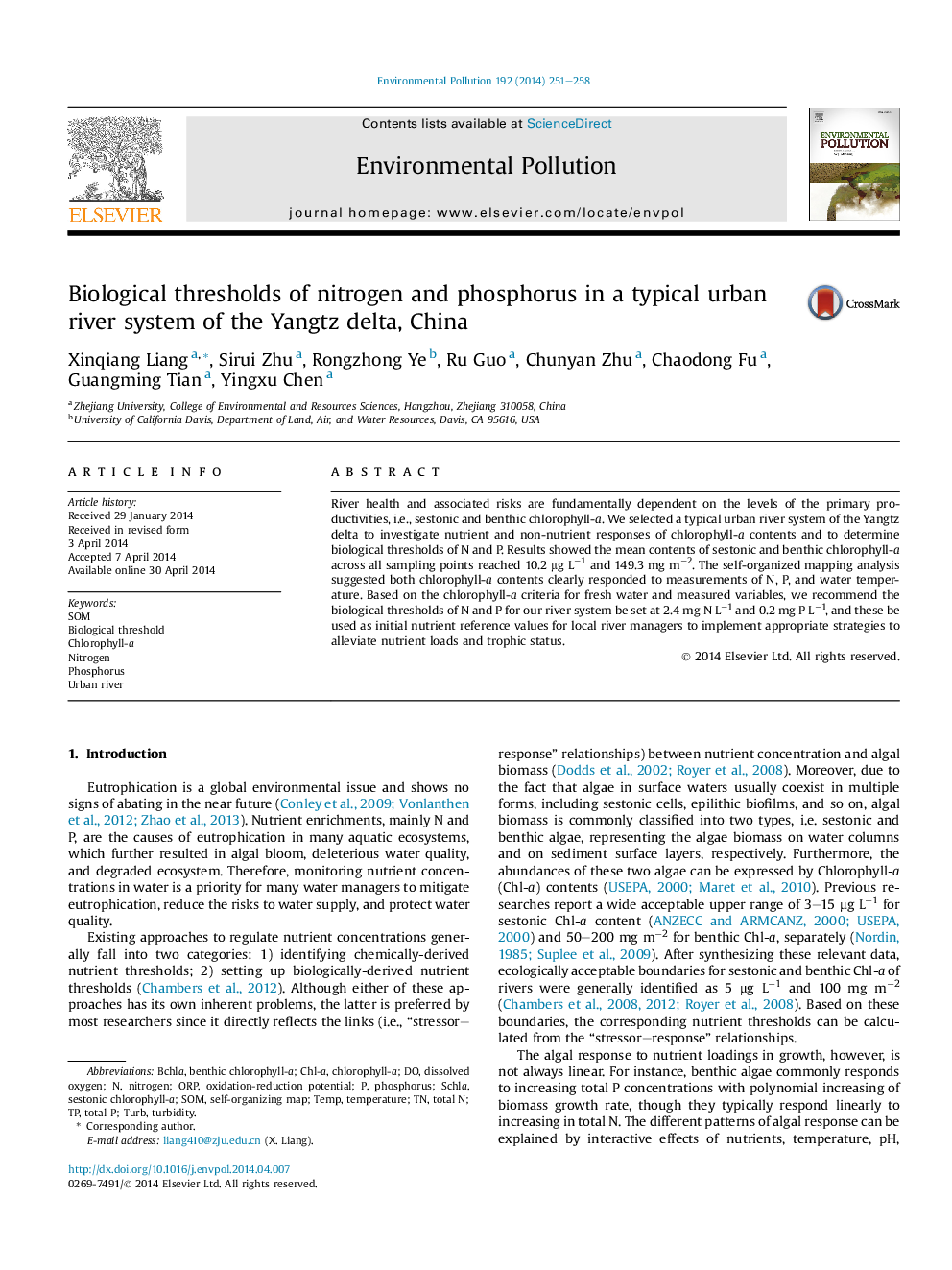| Article ID | Journal | Published Year | Pages | File Type |
|---|---|---|---|---|
| 4424365 | Environmental Pollution | 2014 | 8 Pages |
•Biological thresholds of N and P in an urban river system were calculated.•SOM analysis was able to visualize relationships between algal abundance and nutrient levels.•SOM approach was able to predict algal biomass with temperature alone or with TN.
River health and associated risks are fundamentally dependent on the levels of the primary productivities, i.e., sestonic and benthic chlorophyll-a. We selected a typical urban river system of the Yangtz delta to investigate nutrient and non-nutrient responses of chlorophyll-a contents and to determine biological thresholds of N and P. Results showed the mean contents of sestonic and benthic chlorophyll-a across all sampling points reached 10.2 μg L−1 and 149.3 mg m−2. The self-organized mapping analysis suggested both chlorophyll-a contents clearly responded to measurements of N, P, and water temperature. Based on the chlorophyll-a criteria for fresh water and measured variables, we recommend the biological thresholds of N and P for our river system be set at 2.4 mg N L−1 and 0.2 mg P L−1, and these be used as initial nutrient reference values for local river managers to implement appropriate strategies to alleviate nutrient loads and trophic status.
